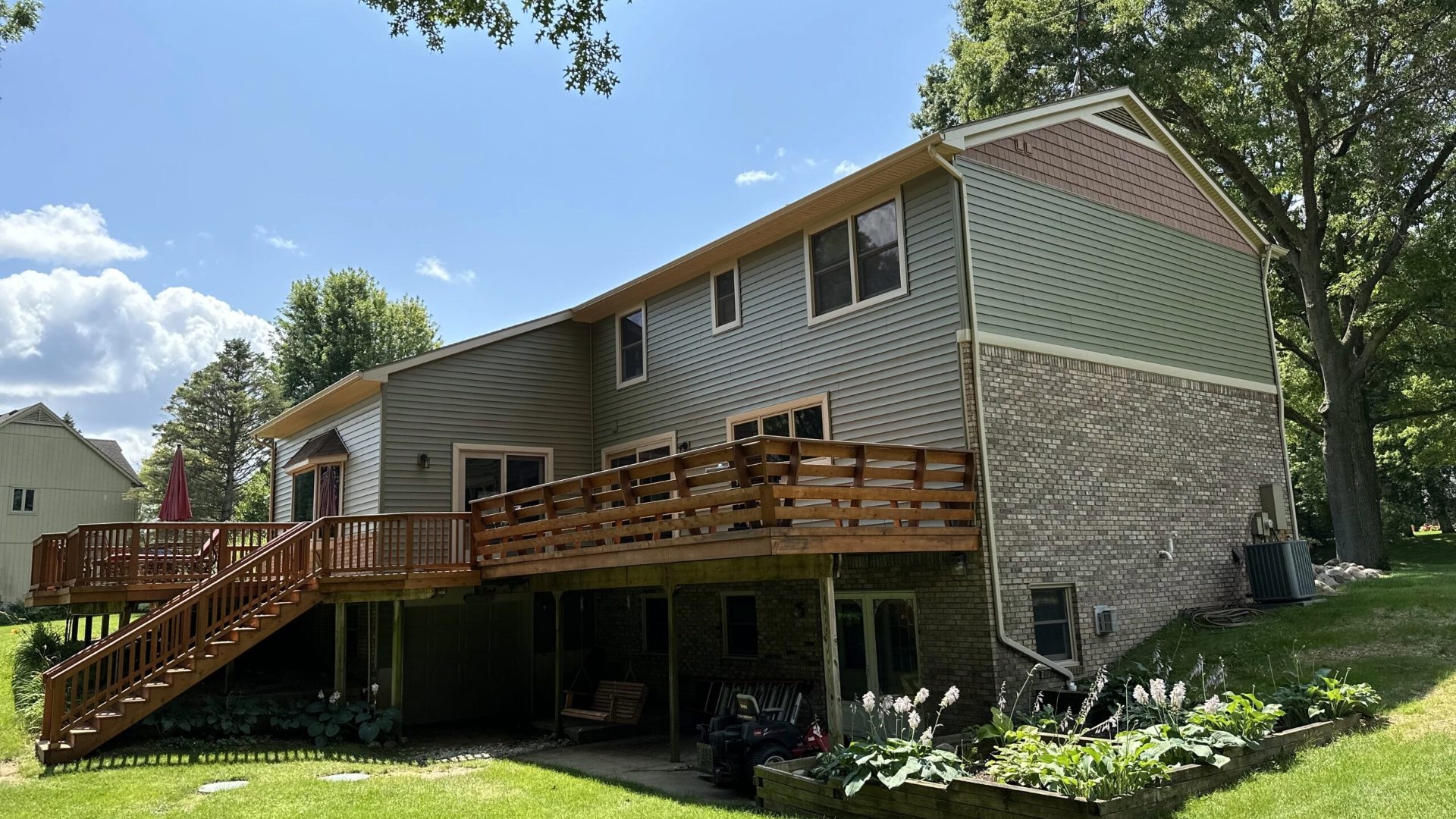Your energy bills keep climbing, but did you know your home’s siding could be the culprit? Many Michigan homeowners are surprised to learn that their siding choice can impact energy efficiency by up to 20%, directly affecting heating and cooling costs year-round.
The right siding doesn’t just protect your home from the elements – it acts as a critical component of your home’s thermal envelope, helping maintain comfortable temperatures while reducing energy consumption. From insulated vinyl options to fiber cement alternatives, today’s siding materials offer impressive potential to reduce utility bills with siding upgrades.
Whether you’re planning a complete siding replacement or just exploring ways to improve your home’s efficiency, understanding how different materials perform can help you make informed decisions that deliver both immediate comfort and home energy savings.
🏠 Understanding Home Energy Efficiency Basics
Before diving into siding options, it’s important to understand what energy efficiency really means for your home and why it matters more than ever.
What Energy Efficiency Actually Means
Energy efficiency refers to using less energy to achieve the same level of comfort and functionality in your home. It’s about eliminating energy waste while maintaining the indoor environment you want.
Think of your home as a system where every component works together. Your siding, insulation, windows, and HVAC system all influence how much energy you need to heat and cool your space effectively.
Why Energy Efficiency Matters More Than Ever
Beyond the obvious benefit of lower energy bills, energy efficiency offers significant advantages:
- Cost savings – Reduced heating and cooling expenses year-round
- Environmental impact – Lower carbon footprint and reduced energy consumption
- Comfort improvement – More consistent indoor temperatures
- Home value – Energy-efficient homes command higher resale values
- Incentive opportunities – Tax credits and rebates for energy-efficient upgrades
Key Factors Affecting Your Home’s Energy Performance
Several elements work together to determine your home’s energy efficiency:
- Insulation quality – How well your home retains conditioned air
- Air sealing – Preventing unwanted air leaks
- Window performance – Heat gain and loss through glazing
- HVAC efficiency – How effectively your systems heat and cool
- Exterior materials – Including your siding choice
Your siding choice plays a crucial role in this system, affecting heat transfer, moisture control, and your home’s overall thermal performance.
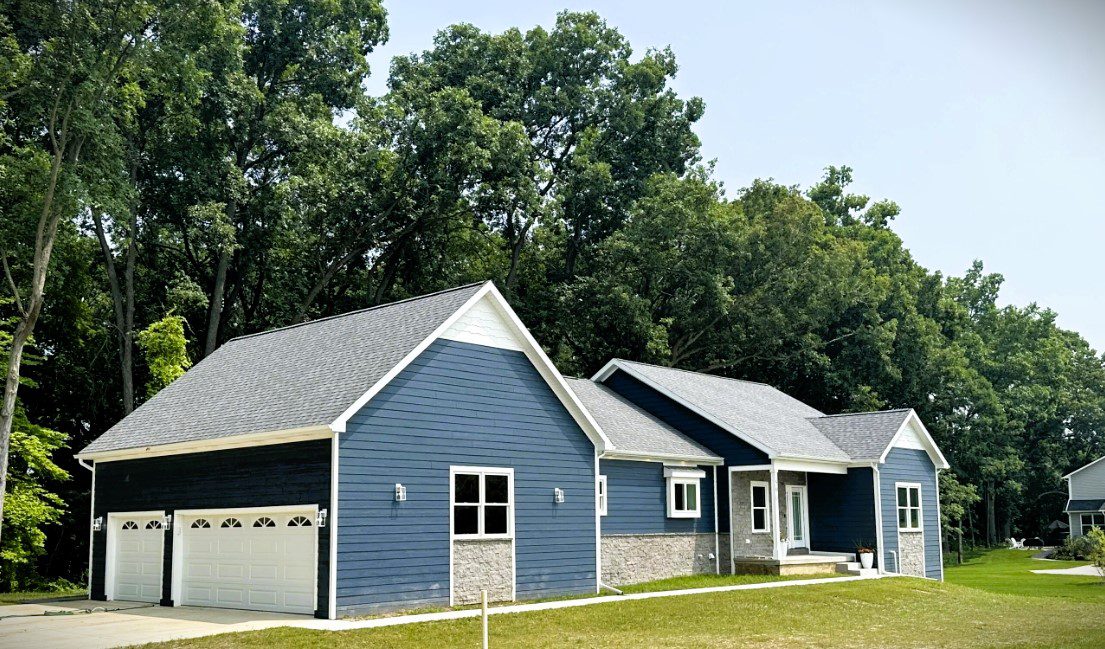
🛡️ How Siding Impacts Your Home’s Energy Performance
Siding serves as your home’s first line of defense against the elements, but its role in energy efficiency goes far beyond basic protection.
Siding as a Thermal Barrier
Siding acts as a critical component of your home’s thermal envelope – the barrier that separates conditioned indoor air from outdoor conditions. Quality siding materials help:
- Reduce heat transfer – Minimize energy loss through walls
- Control air infiltration – Prevent unwanted air leaks
- Manage moisture – Protect insulation from moisture damage
- Reflect solar energy – Reduce cooling loads in summer
The Science Behind Siding Performance
Different siding materials perform differently based on their physical properties:
- Thermal conductivity – How quickly heat moves through the material
- Reflectivity – How much solar energy is reflected rather than absorbed
- Air permeability – How much air can pass through the material
- Moisture resistance – How well the material handles water exposure
R-Value and Insulation Performance
The R-value measures a material’s resistance to heat flow. Higher R-values indicate better insulating properties:
- Standard vinyl siding – R-0.6 to R-0.8
- Wood siding – R-0.8 to R-1.2 per inch
- Fiber cement – R-0.5 to R-0.8
- Insulated vinyl siding – R-2.0 to R-5.0
While these numbers might seem small, they represent significant improvements when applied across your home’s entire exterior surface area.
Beyond R-Value: Total System Performance
Energy efficiency isn’t just about R-values. Quality siding installation also contributes to:
- Air sealing – Proper installation reduces air leaks
- Moisture management – Protects wall systems from water damage
- Thermal bridging reduction – Minimizes heat transfer through structural elements
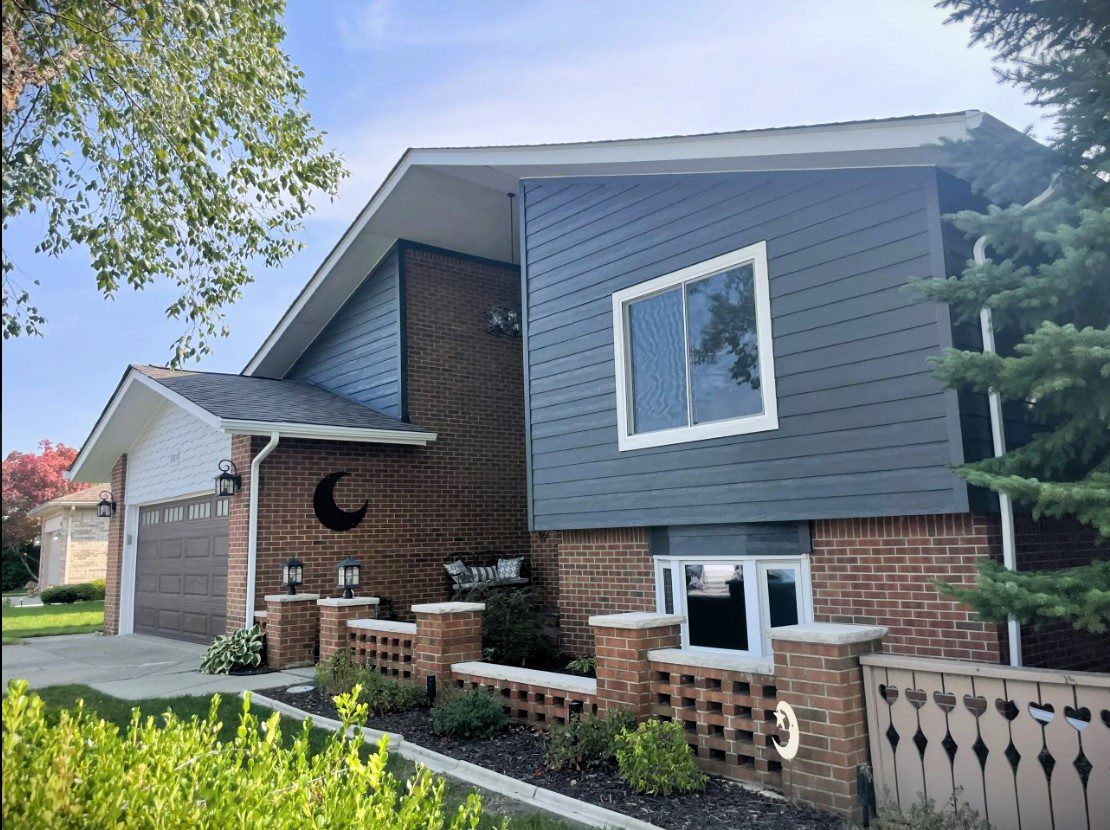
🏗️ Siding Materials: Energy Performance Comparison
Not all siding materials are created equal when it comes to energy efficiency. Here’s how the most popular options stack up for Michigan homeowners, helping you identify the best siding options for your specific needs.
Vinyl Siding: Cost-Effective Performance
Vinyl siding remains popular due to its balance of cost, durability, and maintenance requirements:
Energy Performance:
- R-value – 0.6 to 0.8 (modest insulation)
- Reflectivity – Good, especially in lighter colors
- Air sealing – Excellent when properly installed
- Moisture resistance – Very good
Pros: Low maintenance, cost-effective, good weather resistance, available in many colors
Cons: Limited insulation value, can expand/contract with temperature changes
Wood Siding: Natural Insulation Properties
Wood siding offers natural insulation properties and timeless aesthetic appeal:
Energy Performance:
- R-value – 0.8 to 1.2 per inch (varies by wood type)
- Reflectivity – Depends on finish and color
- Air sealing – Good with proper installation and maintenance
- Moisture resistance – Requires regular maintenance
Pros: Natural insulation, beautiful appearance, renewable material
Cons: Higher maintenance requirements, susceptible to weather damage without proper care
Fiber Cement: Durability Meets Efficiency
Fiber cement siding combines durability with decent energy performance:
Energy Performance:
- R-value – 0.5 to 0.8 (similar to vinyl)
- Reflectivity – Excellent, especially with proper coatings
- Air sealing – Very good
- Moisture resistance – Excellent
Pros: Fire-resistant, very durable, low maintenance, excellent weather resistance
Cons: Higher upfront cost, requires professional installation
Insulated Vinyl Siding: Maximum Energy Efficiency
Insulated vinyl siding represents the current pinnacle of energy efficient siding options, offering numerous insulated siding benefits:
Energy Performance:
- R-value – 2.0 to 5.0 (significantly higher than standard options)
- Reflectivity – Excellent
- Air sealing – Superior
- Moisture resistance – Excellent
Pros: Highest energy efficiency, excellent air sealing, good durability, potential for significant energy savings
Cons: Higher upfront cost, limited color options compared to standard vinyl
Performance Summary
For Michigan’s climate, energy efficiency rankings typically follow this order:
- Insulated vinyl siding – Best overall energy performance
- Fiber cement – Good efficiency with excellent durability
- Wood siding – Moderate efficiency with natural appeal
- Standard vinyl – Basic efficiency at an affordable price
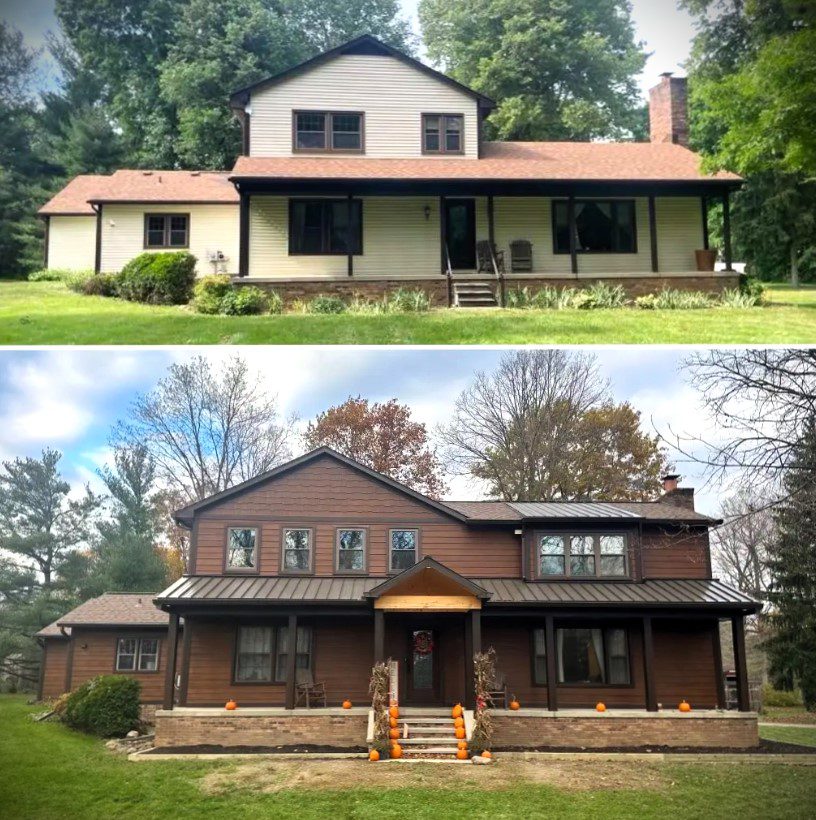
🎯 Choosing the Right Siding for Your Home
Selecting the most energy-efficient siding for your home requires balancing multiple factors beyond just R-values. Here’s how to make the best choice for your situation.
Climate Considerations for Michigan Homes
Michigan’s climate challenges require siding that can handle:
- Extreme temperature variations – From sub-zero winters to hot, humid summers
- Moisture exposure – Rain, snow, and high humidity levels
- Freeze-thaw cycles – Repeated expansion and contraction
- UV exposure – Intense summer sun that can fade and degrade materials
For Michigan homes, insulated vinyl siding or fiber cement typically provide the best combination of energy efficiency and weather resistance.
Budget Considerations and ROI
When evaluating siding options, consider both upfront costs and long-term savings:
Initial Investment vs. Long-term Savings:
- Standard vinyl – Lowest upfront cost, moderate energy savings
- Insulated vinyl – Higher upfront cost, significant long-term savings
- Fiber cement – Moderate upfront cost, good long-term value
- Wood siding – Variable cost, depends on maintenance requirements
Quality siding installation can provide a strong return on investment through energy savings, increased home value, and reduced maintenance costs.
Energy Efficiency Incentives
Don’t forget to factor in available incentives:
- Federal tax credits – Available for certain energy-efficient home improvements
- State rebates – Michigan programs may offer additional savings
- Utility incentives – Some utility companies offer rebates for energy-efficient upgrades
- Financing options – Special loan programs for energy-efficient improvements
Professional Assessment Benefits
A professional evaluation can help you:
- Assess current performance – Identify specific energy loss areas
- Calculate potential savings – Estimate ROI for different siding options
- Identify incentives – Find all available rebates and tax credits
- Ensure proper installation – Maximize energy performance through quality workmanship
Making the Final Decision
The best siding choice depends on your specific priorities:
- Maximum energy efficiency – Choose insulated vinyl siding
- Best long-term value – Consider fiber cement
- Budget-conscious choice – Standard vinyl with quality installation
- Traditional appeal – Wood siding with commitment to maintenance
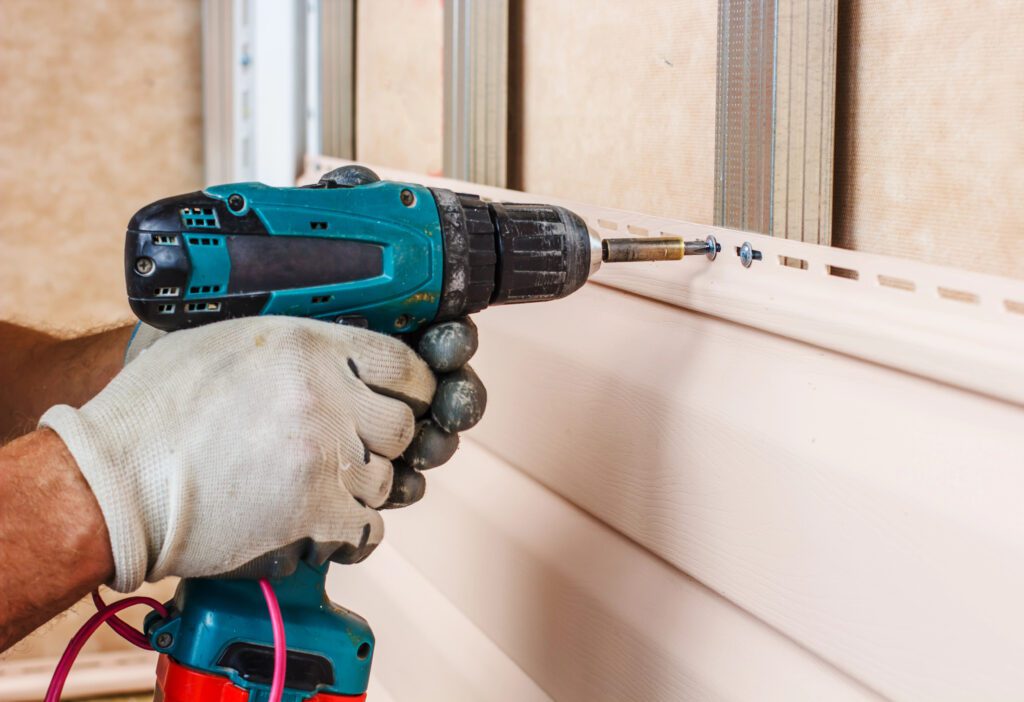
🔧 Maximizing Your Siding’s Energy Performance
Even the most energy-efficient siding won’t perform optimally without proper installation and maintenance. Here’s how to get the most from your investment.
Installation Quality Matters
Professional installation is crucial for energy efficiency:
- Proper air sealing – Eliminate gaps and air leaks
- Correct fastening – Prevent thermal bridging and maintain performance
- Moisture management – Ensure proper drainage and vapor barriers
- Thermal bridging reduction – Minimize heat transfer through structural elements
Maintenance for Long-term Performance
Regular siding maintenance preserves energy efficiency:
- Annual cleaning – Remove dirt, debris, and biological growth
- Damage inspection – Check for cracks, gaps, or loose panels
- Prompt repairs – Address issues before they compromise performance
- Caulk maintenance – Keep joints and seams properly sealed
Complementary Energy Efficiency Upgrades
Maximize your siding’s performance with related improvements:
- Window upgrades – Energy-efficient windows complement efficient siding
- Insulation improvements – Upgrade wall insulation when re-siding
- Air sealing – Address air leaks throughout the home
- HVAC optimization – Right-size systems for improved efficiency
Taking Advantage of Incentives
Research available programs to maximize your savings:
- Federal tax credits – IRS credits for energy-efficient improvements
- State programs – Michigan rebate programs for energy efficiency
- Utility incentives – Local utility company rebates
- Financing options – Special loan programs for energy improvements
🚀 Transform Your Home’s Energy Performance
Choosing the right siding is one of the most impactful decisions you can make for your home’s energy efficiency. Whether you opt for cost-effective vinyl, durable fiber cement, or high-performance insulated options, the right choice can deliver significant energy savings while enhancing your home’s comfort and value.
Remember that energy efficiency is about more than just the materials you choose – proper installation, regular maintenance, and complementary upgrades all play crucial roles in maximizing your investment.
Key Takeaways for Energy-Efficient Siding
- Material matters – Insulated vinyl and fiber cement offer the best energy performance
- Installation is critical – Professional installation maximizes energy benefits
- Climate considerations – Choose materials suited to Michigan’s challenging weather
- Long-term thinking – Consider total cost of ownership, not just upfront price
- Incentives available – Research rebates and tax credits to reduce costs
Ready to Improve Your Home’s Energy Efficiency?
Don’t let inefficient siding continue costing you money on energy bills. Contact Leach Construction today to discuss how energy-efficient siding can transform your home’s performance.
Our experienced team can help you evaluate your options, maximize available incentives, and ensure professional installation that delivers lasting energy savings. From initial consultation through project completion, we’re here to help you make the best choice for your home and budget.
Your more efficient, comfortable home is just a consultation away. Let’s make it happen together!

